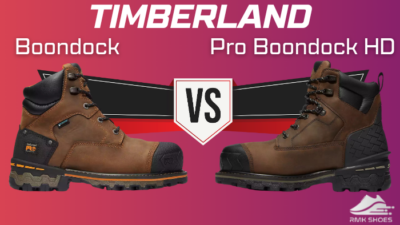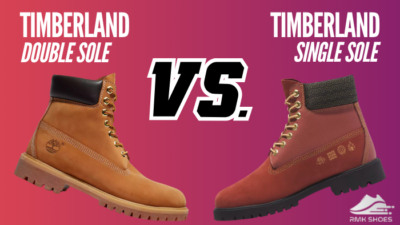For your ultimate relief, the podiatrist suggests you buy high-arch shoes when suffering from foot issues. And Birkenstock sandals are ideal for that.
But due to their high price, you wanna buy something that can conform the similar comfort at an affordable price. Luckily, Cushionaire offers the same.
Now you are searching for the differences and similarities between both shoes for choosing the suitable one, right?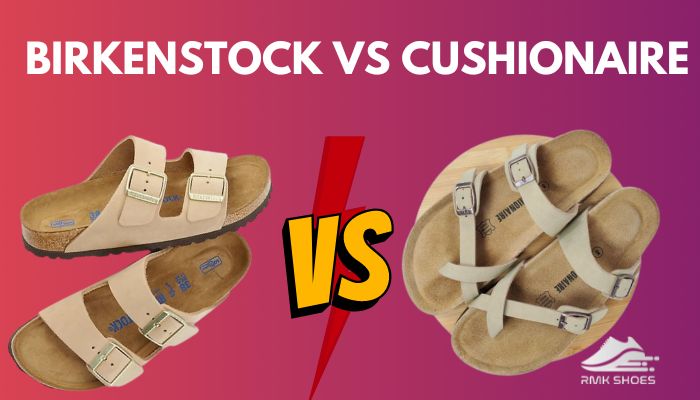
Luckily, in this article, you’ll find all the aspects that differentiate those sandals.
So, read along!
7 Key Differences Between Birkenstock & Cushionaire
When comfort comes first, sandals are a staple component. Birkenstock and Cushionaire, both strappy slip-on, are famous for their offered feature with vibrant appearances.
They act like twin brothers yet hold a lot of dissimilarities.
After vigorously wearing and observing both shoes, I found seven significant variations that differentiate them entirely. And now, I will describe the divergence that I found from them.
Let’s check out the differences between Birkenstock and Cushionaire:
Build-In Material
The Birkenstock sandals are produced with suede and leather upper, which are best for your soft skin. The brand implemented natural cork footbeds so that they can mold according to your foot shape.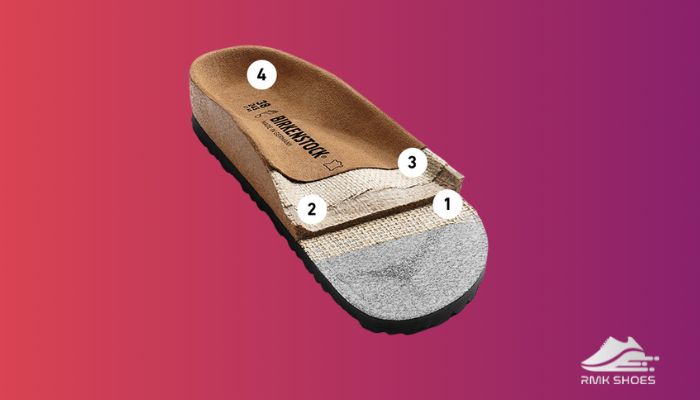
At the bottom of the cork, Birks use latex material, offering squishy feelings. Additionally, the materials make Birkenstock long-lasting.
They also offer renewable features, and you can replace those outstanding materials individually.
Conversely, the Cushionaire sandals use mesh fabric to make their toe top upper. And they provide a specially designed shock-absorbing cork footbed that offers the ultimate comfort.
Cushionaire comes with a proper rubber outsole, which is good for grip and traction.
So in this pair, you will find a complied pack of comfort and security.
Level of Breathability
If you think of ventilation and breathability, then both shoes are quite different from each other.
Birkenstock is more open and ventilated for the designer straps. The toes are free and well-breathable compared to other summer options. And it helps to keep your feet dry and cold on tough hot days.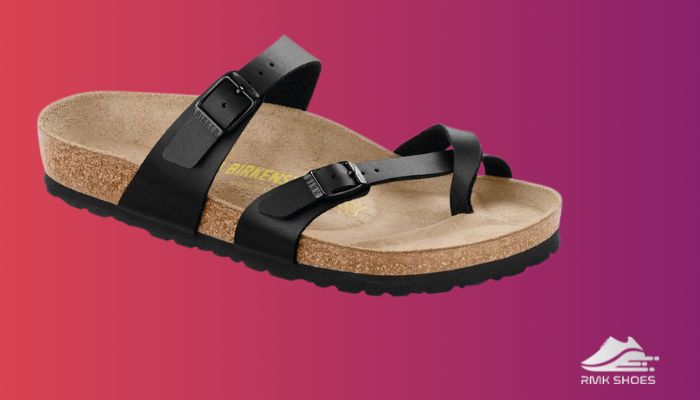
On the other hand, the Cushionaire pair are closed-toe shoes; thanks to the mesh upper, they offer good breathability.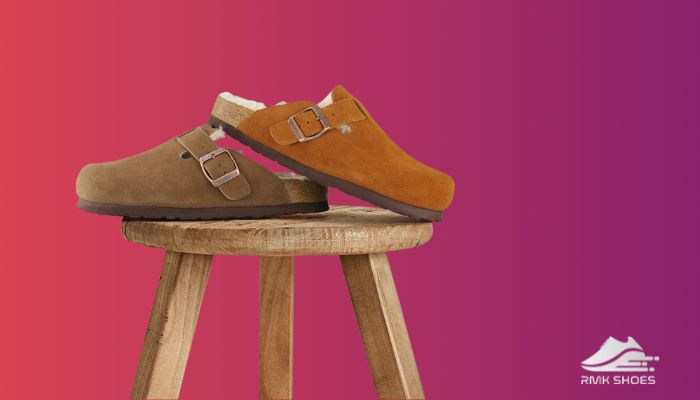
However, on a hot summer day, they need to be ventilated more. And for this reason, you feel a little warm and suffocated by wearing them compared to Birks pair.
Price Variation
For me, the most noticeable difference between both Birkenstock and Cushonaire sandals is their pricing. For instance, if you take Birkenstock’s famous Arizona pair, they ask $89 to $109 per piece.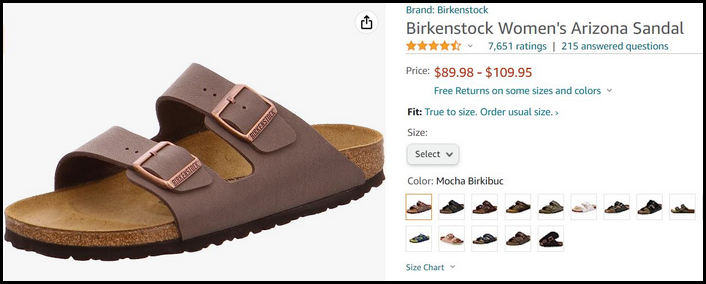
Contrary, the Cushonaire charges only 24 to 29 bucks for each pair. I don’t know how they can manage the price at this minimum dollar.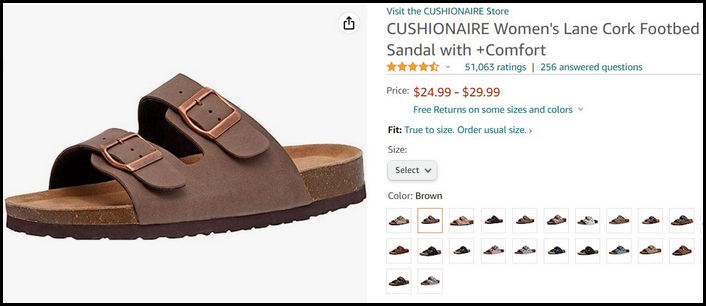
Conforming to the price, Cusionaire is the best pair with moderate arch support.
Arch Support
Arch support is the most important criterion when you consider a shoe for your particular foot condition.
Birks sandals are the most famous for their incorporated cork and latex footbed, offering maximum arch support. This specific shoe is meant to relieve your feet during special conditions.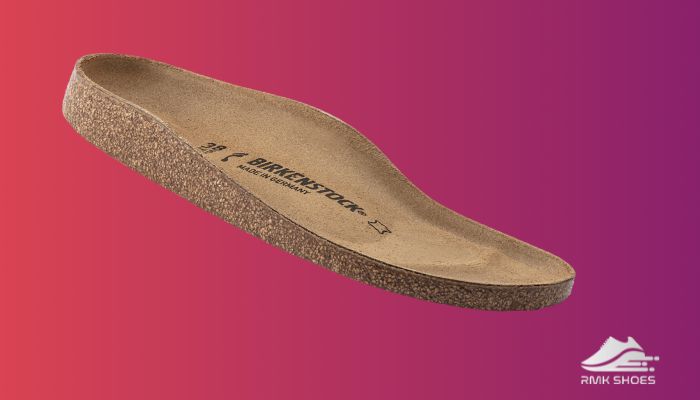
Also, Birkenstock is a good choice for sciatica, and it reduces pain and discomfort.
Cushionaire, also known as a dupe of Birkenstock, for its iconic look with a cork sole. But they are not that much flexible as Birks.
The cork footbed only offers instant coziness and well-balanced shock-absorbing capacity.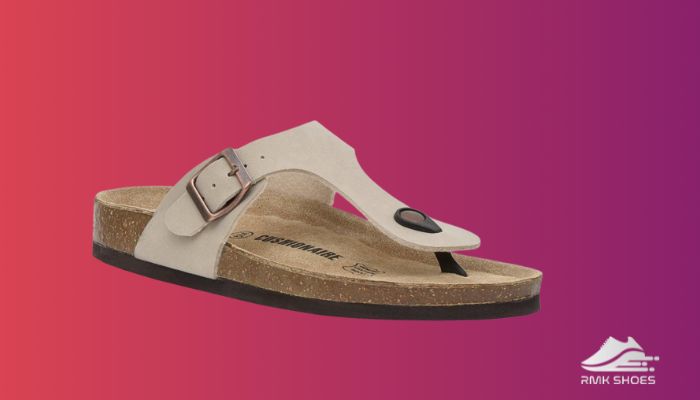
So for day-long outdoor programs, Cushionaire is not enough for you when you have flat feet and need better work support. In contrast, Birkenstocks are good for flat feet too.
Comforting Level
When we talk about comfort, then Birkenstock has done this job amazingly. They set a benchmark for confirming comfort. The brand designed the bottom for, considering the foot alignment in mind.
Besides, the leather strap is also easy to adjust, So you can fix them according to your foot demand.
Contrary, Cushionaire also gives pleasure yet does not support as much as the Birks pair. They incorporated rubber soles that feel a little bouncy and that are not appropriate for day-long activities.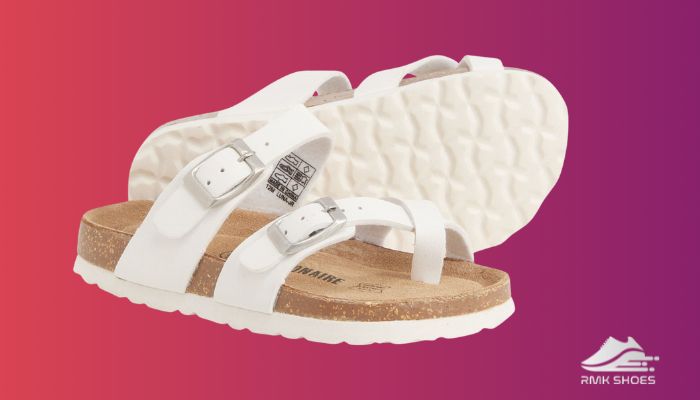
Design Variation
For design and color variation, Cushionaire sandals are a step ahead compared to Birkenstock.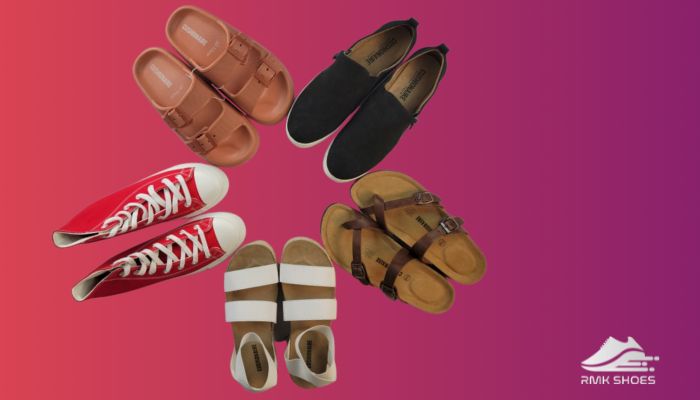
Since 1964, the Birks brand release a vast amount of shoes but the color and style are pretty similar, and the changes are each variation is microscopic. They always try to implement new technologies without changing their outlook.
After decades, in recent days they release some shoes that are different and eye-catchy from the previous ranges.
Alternatively, the Cushionaire launched a variety of shoe designs with vibrant hues.
Not only that but for a distinctive look, they also offer both closed and open-toe sandals. For this design diversity, they gain a lot of responses in this short time.
Toe Box Area
Both Birkenstock and Cushionaire have a vast toe box room. This area plays a vital role when you want flexible shoes to wiggle your toe properly.
If you compare them separately, the Birkenstock has more space for your forefoot. The open-toe feature confirms the open area in Birks sandals.
Conversely, the Cushionaire shoes are featured with a closed-toe design which provides a limited space in the toe box room. But when you wear their open-toe slip-on, you will find more or less similar space like your Birks pair.
The aforementioned features show the mismatch. Otherwise, they have a lot of similarities. I also describe the resemble characteristics in the next segment.
Similarities of Cushionaire and Birkenstock
As we all know, Cushionaire and Birkenstock carry a vast amount of similarities. For this reason, some users consider Cushionaire as a knock-off of Birks.
But after the previous segment, you know that both shoes are separate with different features. For a better understanding, perceive the iconic closeness of Birkenstock & Cushionaire shoes.
Without any delay, know the similarities between both shoes:
Style
Style and appearance are the most noticeable feature that makes them identical. Birkenstock & Cushoinaire, both brands, consider the two straps with buckle sandals as their most selling slip-on.
Style-wise and color-wise, those shoes are like brothers.
Stiff Cork Sole
Cusionaire is also manufactured with stiff cork soles, which is quite similar to Birks shoes. The sturdy cork material offers a stable seat for those who have foot issues.
Furthermore, If you notice the footbed closely, you will find the iconic structured designs also close enough in both shoes.
Body Weight Distribution
For me, weight distribution is the most crucial characteristic when we choose a shoe for our regular use.
And Birkenstock and Cushionaire both shoes distribute the full body weight equally.
These are the most iconic features which make them identical.
Pros & Cons of Birkenstock and Cushionaire
Cushionaire & Birkenstock shoes are outstanding choices for their vast amount of advantages. Yet they have some drawbacks too.
So, let’s check out the Pros and Cons of both Shoes:
Advantages of Birkenstocks
- The designed cork sole offer a secure and fixed seat for your day-long duty.
- They use a latex bottom that ensures limited coziness.
- The shoe comes with two leather straps upper that make them breathable and best for hot summer days.
- For its well-ventilated feature, you can wear Birkenstock to the beach.
- Birks are well known for their versatile appearance.
Disadvantages of Birkenstocks
- The shoe is quite pricey compared to other summer outfits.
- Birkenstock can hurt your feet sometimes for its rigid material.
Advantages of Cushionaire
- Cusionaire pairs are cheap with a lot of top-notch features.
- The rubber and cork sole offer a stable step along with a bouncy feel.
- Structured heel cups provide a secure seat for your feet.
- Versatile design and vibrant colors make them distinctive.
- For their rubber sole, you will get a good grip and traction.
Drawbacks of Cushionaire
- In their closed-toe shoe, you’ll find a little congested space for your feet.
- After wearing them, the rubber bottom tends to flatten the texture and increase slipping tendencies.
- For its closed suede upper, they are minimally ventilated.
Which One Should You Get?
After in-depth research and discussion, you now have enough information about how both shoes work in different categories.
Birkenstock and Cushionaire are both recommended by podiatrists for medical foot conditions. But the decision of choosing one pair between them is a little tricky, because of their splendid features.
Both shoes have a lot of advantages with a few drawbacks.
If you want to buy a shoe that supports you for a long duration, then pick the Birks pair. That one pair cover all occasion by providing great foot relief. Moreover, these strappy slip-on are good for everything.
On top of that, you can hike with your Birkenstock when you have any special foot conditions.
Conversely, Cushionaire is the best option for those who have budget issues. More or less, that also offers the same feature as Birks with a minimum price. In comparison, Birkenstock is quite expensive for normal people.
For me, Cushionaire is a wonderful budget-friendly alternative for regular wear.
Besides, the brand also designed fur lining insoles for an extra comfy feel. These closed-toe models are best for chilly weather. So that one pair can cover various segments with grace.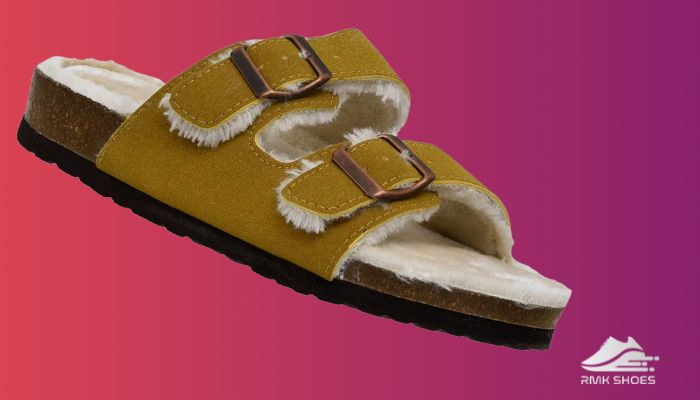
In one line, if you have no budget issue then grab the Birks pair, but if you have any then go for the Cushionaire sandals without any hesitation.
According to my perspective, Cushionaire and Birks are both outstanding options when you suffer from foot pain. So, you can purchase your desired pair, conforming to your requirement.
FAQs
Does Cushionaire have arch support?
Yes, Cushionare offers arch support as Birkenstock does. The cork footbed and designed heel cup are the main elements for arch support.
Why do podiatrists recommend Birkenstocks?
Podiatrists concern about the long-term effect, and they find Birkenstock as an ideal pair for all foot conditions. Experts think the soft and bouncy outsole is not suitable for all age groups. And they consider Birks cork soles for their sturdiness.
Is Cushionaire good for plantar fasciitis?
The users found Cushionaire good for plantar fasciitis. These pairs help in recovering all foot issues instantly.
Before You Say Goodbye
Birkenstock and Cushionaire shoes are both suitable options for your special foot problems. So, you can pick any of them according to your preferences.
I hope you already select your pair after reading this writing piece about the mismatches along with the similarities. Let me know in the comment section which pairs you buy and how it deals with your foot issue.
Happy Shopping!

